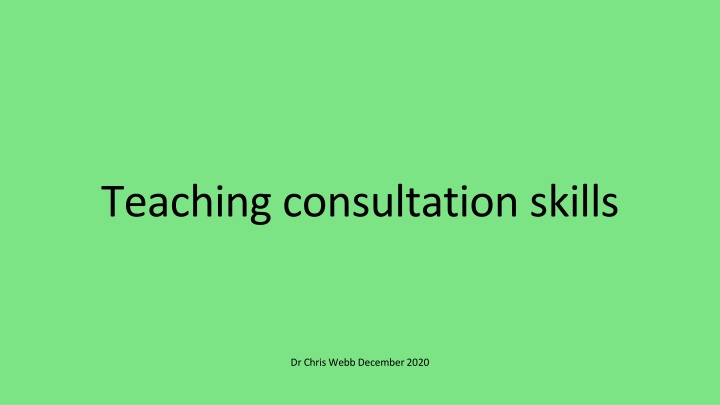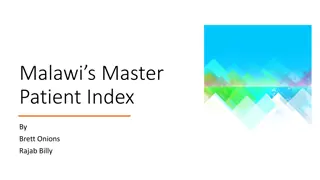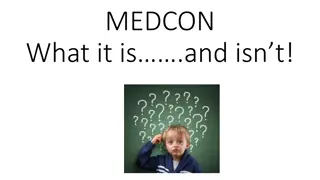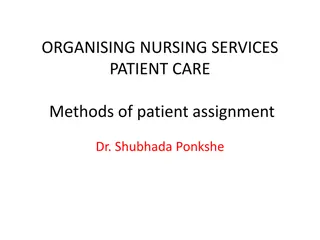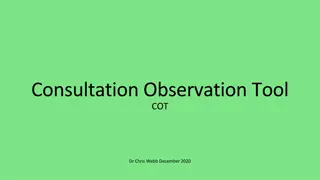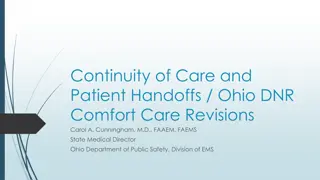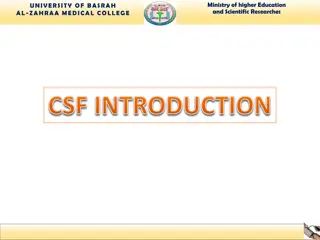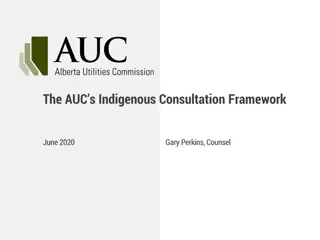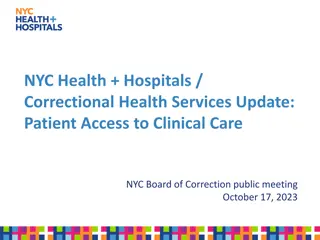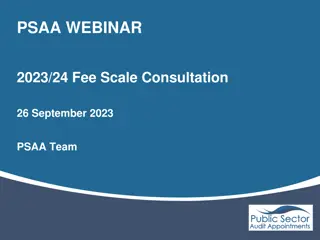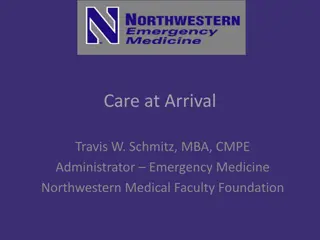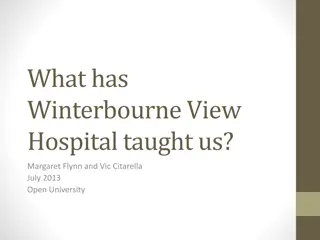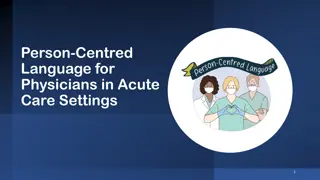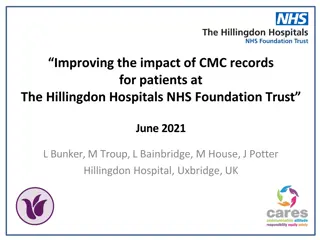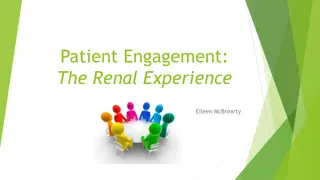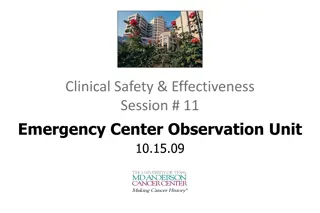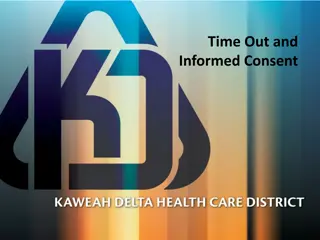Mastering Consultation Skills for Effective Patient Care
Enhance your consultation skills by learning how to open a consultation, understand the patient's psycho-social context, identify cues, develop diagnostic hypotheses, rule out serious conditions, and conduct appropriate examinations and tests for comprehensive patient care.
Download Presentation

Please find below an Image/Link to download the presentation.
The content on the website is provided AS IS for your information and personal use only. It may not be sold, licensed, or shared on other websites without obtaining consent from the author.If you encounter any issues during the download, it is possible that the publisher has removed the file from their server.
You are allowed to download the files provided on this website for personal or commercial use, subject to the condition that they are used lawfully. All files are the property of their respective owners.
The content on the website is provided AS IS for your information and personal use only. It may not be sold, licensed, or shared on other websites without obtaining consent from the author.
E N D
Presentation Transcript
Teaching consultation skills Dr Chris Webb December 2020
7 tasks Opens consultation Discovers psycho-social context and patient s ICE, identifies cues Generates and tests diagnostic hypotheses and excludes serious disease Undertakes appropriate examination and tests Makes a working diagnosis Offers a safe patient-centred management plan Provides follow-up and safety net
The opening of the consultation is very important, and sets the scene. If it goes badly, subsequent tasks can be adversely affected. A good opening contributes to the establishment of rapport and puts the patient at ease
Positive behaviours the trainee should consider Introduce himself/herself to the patient Demonstrate interest in the patient Use non-verbal body languages to encourage the patient and helps them to feel at ease Begin with an open question (eg How can I help today? ) Don t interrupt the patient until they have said what they need to say Remainfocussed on the patient with good eye contact and positive non verbal body language
Related interpersonal skills Generates rapport Uses open and closed questions Listens and shows curiosity Clarifies
How to help the trainee Activity 1: Watch the first minute of the trainee s consultation. For each consultation check (and discuss): Have they introduced them self (if necessary)? Have they discovered the name of the patient (if necessary)? Are they completely focussed on the patient in front of them? If not, why not? Do they seem interested in the patient? Do they let the patient speak or do they interrupt frequently? Have they started with an open question? Activity 2: Compare the first minute of their consultation with that of others - are there things that they do differently that they can learn from? Activity 3: Ask them to watch others in the practice to identify different styles and which approach suits their own style
Discovers psycho-social context and patient s ICE, identifies cues
Psycho-social context Obtaining information about psycho-social context is vital in the development of patient centred management plans. Some trainees do not ask about psycho-social context at all, or ask about it in a mechanistic way, not realising how important this information is for the later part of the consultation The trainee needs to be able to: Discover the relevant psycho-social information from the patient - this includes aspects of work life and home life. Discover the impact of the problem on patient s work and home life Discover the way that home and work life impacts on the presenting problem
Patients ideas, concerns and expectations. Identifies cues Clunky or formulaic questions seeking the patient s ideas, concerns and expectations detract from the fluency of the consultation Discovering the patient s perspective includes finding out about their ideas, concerns and expectations The trainee needs to respond to both verbal and non verbal cues offered by the patient
Related interpersonal skills Generates rapport Uses open and closed questions Listens and shows curiosity Clarifies Remains alert and responsive to cues Verbalises Uses ICE and psychosocial information
How to help the trainee Activity 1: Review some consultations and write down how they a) ask about psychosocial context and b) how they use this information later in the consultation, particularly when talking about the management plan Activity 2: Ask them to practice the skill of remembering information about psychosocial context and storing it for later use Activity 3: Ask them to devote some consultations to where they specifically make sure that a) they ask about psychosocial information and b) they use that information to inform the management plan
Activity 4: Reflect on any changes they make and whether this helps them involve the patient more in the consultation. Activity 5: Review their consultations and see whether they discover all three: Ideas Concerns Expectations Make sure all three components of ICE are present - they are not interchangeable and each part of ICE provides different information. It may not be necessary to ask directly as encouraging a patient narrative or story with open questions often results in spontaneous offering up of ICE Activity 6: In a joint surgery ask the trainee to write down how you find out about the patient s ICE. Do you use different phrases and expressions? Are there any useful phrases or questions they notice that they could use? If so, ask them to remember them
Activity 7: What happens when the patient spontaneously volunteers ICE? How does you facilitate this? Activity 8: Ask the trainee to specifically incorporate these questions into their routine patient questioning - record some examples to discuss. What works and what doesn t work? Activity 9: Ask them to practice introducing questions in as natural a way as possible paying attention to the right time to introduce the questions (NOTE: there is no absolute rule about the best time to do this) They need to maintain a natural flow and questions should not be unexpected or seem random
Activity 10: They can practice asking about ICE in normal conversation with friends and family Activity 11: When they have been practicing these changes for a while, compare a recent recording to an older one. Hopefully the new one will be less formulaic. Write down the main differences that is making their approach in the new consultation more polished and fluent and continue to work on these changes Activity 12: Watch a series of their recordings - write down all the possible cues they can see in these consultations and compare it with your list. Remember to do some videos focussing the camera on the patient and note non-verbal in addition to verbal cues
Activity 13: If there are cues that they did not notice (but you did) discuss with what prompted the insight that a particular verbal or non verbal behaviour was a cue Activity 14: Remember the huge importance of being curious Activity 15: Now spend a period of consultations and recordings trying to identify more cues
Generates and tests diagnostic hypotheses and excludes serious disease
It is important to demonstrate a safe approach to making diagnoses and to ensure that important diagnoses are effectively ruled in or ruled out. The trainee needs to: Generate a list of differential diagnoses based on the presenting symptom or problem Test each hypothesis weighing up their probability based on focussed history taking Rule out or rules in serious disease during questioning
Related interpersonal skills Clarifies Uses ICE and psychosocial information
How to help the trainee Activity 1: Watch a series of their consultations. For each question, check whether - a) Do they have a list of possible diagnoses in mind, and b) Do they ask sufficiently focussed questions to clarify (where possible) which diagnosis is the most likely. Are there better questions that they could ask that would be more discriminating? Activity 2: Check their ability to identify a realistic list of differential diagnoses by watching consultations where they and you write down a list of plausible differential diagnoses for the presenting problem. At the end of each consultation compare lists. If they are regularly missing possible diagnoses then ask them whether they are missing particular sorts of differential diagnoses. Looking at the book Symptom sorter is also a good way to make sure they are not missing important diagnoses
Activity 3: Many trainees repeat questions or ask the same question in slightly different ways - this does not provide any new information and wastes valuable time. Review consultations to make sure: Do they repeat questions? Are there other questions they could ask that would be effective in clarifying the diagnosis? Do they use any questions which are irrelevant and don't give them either useful positive or negative information? Do they ask questions at inappropriate times in the consultation? Activity 4: Now practice their improved question asking in future consultations and review some of these together. Do they feel the accuracy of their diagnostic process has improved? Do they feel their questioning is more efficient? Activity 5: Using the Condensed Curriculum , and Symptom Sorter , write down a list of presenting symptoms for which they would find it challenging to generate a list of differential diagnoses. Practice producing useful and discriminating questions for these symptoms. Role play is very useful to cover rarer differential diagnoses
Undertakes appropriate examination and tests
Examinations (and tests) can be absent, or too brief, or too lengthy. Long and unfocused examinations waste time and may impair the hypothesis testing process Start to think of examinations (and tests) in the same way as taking a history - their role is to rule in or rule out particular diagnoses and you should only perform an examination if it will help in this process (or reassure the patient about a particular concern). The trainee needs to: Make a decision concerning the need for focussed examination/tests If examination/tests are needed to test diagnostic hypotheses, choice is focussed appropriately Obtain consent Perform a slick and competent examination/tests
Related interpersonal skills Seeks informed consent Verbalises
How to help the trainee Activity 1: Review a series of their consultations. In how many of these consultations is there evidence of their examination/tests helping hypothesis testing? Activity 2: When they review their video consultations, ask - How effective is this examination in clarifying the diagnosis? Think particularly: Is the examination/test necessary? Is there a more effective examination or test that would help to clarify the diagnosis? Activity 3: Ask them to practice this approach in their future consultations and review some of them. Do they feel the accuracy of their diagnostic process has improved?
This part of the consultation is often done badly. In order to do well, the trainee needs to: Make a diagnosis (in some cases, eg cases where a complaint is being made) this might be a formulation or a restatement Tell the patient what the diagnosis is Make sure the diagnosis is correct (or as correct as is possible given the information available in the case)
No diagnosis or diagnosis not shared Making a diagnosis (and sharing it with the patient) are part of the marking scheme for clinical management and interpersonal skills Not sharing a (correct) diagnosis makes an effective patient centred management plan very difficult to achieve
Wrong diagnosis Making a wrong diagnosis makes it very difficult to produce an effective management plan. Many wrong diagnoses arise from insufficient knowledge, in particular: Incomplete knowledge of possible diagnoses Ineffective knowledge of the key diagnostic differences between diseases Sometimes inaccurate diagnoses originate from illogical decision making - even when the trainee has enough knowledge, and asks the right questions, he/she reaches a diagnostic decision that is not based on the information gained. This is sometimes because the trainee has already decided what the diagnosis is, and discounts any evidence to the contrary
Related interpersonal skills Remains alert and responsive to cues Verbalises Uses clear language Uses ICE and psychosocial information Shares Negotiates Supports
How to help the trainee Activity 1: Review a series of the trainee s consultations. How many times do they a) make a diagnosis and b) share this with the patient Activity 2: Ask them to reflect on how not making a diagnosis might affect the management part of the consultation Activity 3: Ask the trainee to practice a series of consultations where they pay particular attention to the importance of making and sharing a diagnosis. Ask them to reflect on how this might affect the effectiveness of the management plan
Activity 4: Carry out a needs assessment of their knowledge gaps. Do this by looking at the Condensed Curriculum Guide 2 (Ben Riley et al) and identifying areas where they lack confidence. A very useful book to remedy knowledge problems in diagnosis is Symptom Sorter (Fifth Edition) by Hopcroft and Forte Activity 5: Make sure they are seeing the right sorts of cases, based on the needs assessment Activity 6: Whenever they see a patient who has a symptom that they are unsure about, or where they are not sure which questions to ask to clarify the diagnosis - write this down. Then afterwards (as soon as possible) read up or discuss with colleagues and hence improve their knowledge about this particular part of patient care
Activity 7: Review a series of consultations together. How often is their diagnosis or diagnoses different to that reached by you. Reflect on why this is happening Activity 8: Watch a consultation where they reach a different diagnosis to you and go through the decision making process in detail. Find out where they diverge in decision making and ask them to reflect on this Activity 9: Now ask them to address these issues and repeat the process in 5) above. Is the gap between them and you becoming less?
Offers a safe patient-centred management plan
The commonest cause of failure is an inability to manage conditions according to up to date guidelines. This is likely to be a knowledge problem. In addition, many trainees are disorganised and do not manage time well, so that the management part of the consultation is rushed and/or doctor centred The trainee therefore needs to be able to: Have sufficient knowledge to offer to the patient effective management strategies Involve the patient so that the final management plan is patient centred rather than doctor centred Consult in such a way that there is sufficient time to allow the necessary discussion between patient and doctor
Related interpersonal skills Verbalises Uses clear language Uses ICE and psychosocial information Shares Negotiates Supports
How to help the trainee Activity 1: Ask the trainee to carry out a needs assessment of their knowledge gaps. Do this by looking at the Curriculum Guide and identifying areas where they lack confidence Activity 2: Make sure they address their knowledge gaps in the area of management. As there is overlap between this part of RCA preparation and the AKT, similar resources can be used. Focussed revision is essential here to avoid spending too much time reading and not enough time applying their knowledge to patients management Activity 3: Whenever they see a patient where they are not sure how to manage the problem - write it down. Then afterwards (as soon as possible) read up on the management of this condition, and write down what they have learnt. If possible, try to discuss what they have learnt with you or other colleagues
Activity 4: Check they are seeing the right sort of cases, based on the needs assessment. Male sure they get the right clinical exposure for their needs. If all else fails, role play the types of cases they need to see Activity 5: Review a series of consultations - how often is their suggested management plan different from yours? Discuss why this is? Possible reasons to consider other than insufficient knowledge are: Wrong diagnosis (so wrong management!) Lack of time leading to either no management plan or a rushed management plan. No consideration of simple management options such as - time, rest - reassurance - regular review etc Activity 6: Address the problem areas identified and review new consultations together. Is the gap between their management plan and yours becoming less?
Activity 7: Ask them to keep on top of gaps in their knowledge. They can do this by: Reading and summarising all new relevant guidelines from NICE and SIGN Presenting new guidelines to colleagues in the practice Making sure they follow up any gaps in their knowledge that emerge from consultations (see (3) above) - PUNs and DENs At each debrief discuss their management plan from one of their consultations Try What if.......? analysis. This involves using a case which they think you have managed well but adding another layer of difficulty. Example include: What if the patient refuses the treatment you offer.....? - What if the patient has other medication that may interact with the medication you are suggesting....? - What if the patient want a solution to their problem very quickly......?
Safety netting and follow up are important for patient safety and are part of the clinical management domain in the RCA. Bad or no safety netting/follow up can be dangerous for the patient or cause inappropriate anxiety. So the trainee needs to be able to: Develop a safety net for the patient that is SMART (Specific, Measurable, Achievable, Relevant and Timely) Offer appropriate follow up the patient, which is dependent on the nature of the condition
Related interpersonal skills Remains alert and responsive to cues Verbalises Uses clear language Uses ICE and psychosocial information Shares Negotiates Supports
How to help the trainee Activity 1: Review a series of consultations to see how often they actually discuss safety netting and follow up with the patient? In the cases where they do discuss safety netting/follow up, would this allow the patient to come back for review at the appropriate time (not too late, not too early). Activity 2: Get them to use the patients! Ask the trainee to ask them if they feel confident about the follow up and safety netting plans the trainee just discussed? The trainee should ask the patient to repeat to them when they would come back - has the explanation been understood? If not, ask them do this again and again check back with the patient. Activity 3: Ask the trainee to continue practising these skills - ask them to ask the patient about their confidence in, and understanding of, their suggestions.
In simple terms, rapport is getting on well with a person. More technically, it is a state of harmonious understanding with another individual that enables greater and easier communication . Good rapport is essential in a consultation and will make the whole consultation go well Rapport is closely linked with showing empathy - in general a doctor who is good at showing empathy is good at developing rapport. Many of the skills that are needed to develop rapport are also needed to develop empathy Sometimes rapport with a patient is easy - you just naturally hit it off together. There are communication skills to try that make the process easier Over enthusiastic or insincere attempts at demonstrating empathy often contributes to a non- fluent consultation or a consultation full of jarring and formulaic expressions. These need to be avoided
Behaviours enhancing rapport Being relaxed and open Listening actively, showing curiosity, avoiding looking bored or disinterested Demonstrating that you understand by nodding etc Showing non verbal behaviours that enhance rapport such as leaning forward slightly, making eye contact, having an open stance (eg arms not folded) Asking open questions Not being judgemental
Related interpersonal skills Opens consultation Discovers psycho-social context and patient s ICE, identifies cues
How to help the trainee Activity 1: Ask the trainee to review the consultation ignoring for now any clinical content and just measuring how effective they are at developing rapport. They will need to specifically look at the following behaviours: Do they look interested in the patient? Do they ask open questions frequently or are most of your questions closed questions? Do they look bored? Do they look tense or stressed or rushed? How often do they interrupt the patient? How often do they repeat questions that they have already asked? How do they sit? What non verbal behaviours do they show? Do they criticise the patient? Activity 2: Ask them to repeat the process with colleagues in the practice (joint surgeries are a good way to do this). Are there any differences? Are there any new approaches that they can adopt to improve their rapport with patients? Activity 3: Empathy - ask them to consider what how it would feel to have to deal with the medical or social problems faced by the patient. They might like to think back to a time when they felt ill or had to seek help from health care professionals
Activity 4: Observe the consultation style of a doctor who is good at showing empathy - ask them to write down what he or she does that enables him/her to be empathic Activity 5: Once they have identified any of their empathy reducing behaviours - try and avoid them - watch them consult over a period of time to see if they have succeeded Activity 6: Review consultations and identify any jarring or false attempts at empathy. It s often less what you say but more in what context and how you say it. To help with this, have a look at the examples below: I m so sorry to hear that as a response to a spouse dying 20 years ago It must be terrible for you not to be able to walk the dog in response to patient saying that his claudication means he can t walk as far I m really sorry that you've been having these terrible headaches in response to a patient breezing in cheerfully, asking for some stronger pain killers
Activity 7: Similarly, they should be careful with jarring out of the blue questions about psycho-social functioning. Have a look and see if this happens. This can seriously damage rapport. Again, to help, there are some examples of these below: Suddenly asking: Oh I forgot to ask you before, how is your marriage? Asking an unemployed patient - What do you do for a living? Activity 8: Ask them to remove these expressions from future consultations and check if there is a difference
